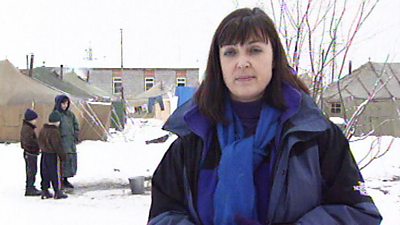Bridget Kendall MBE
From the rise of Perestroika and Glasnost to the ultimate end of the Soviet Union, Bridget Kendall became a household name after she was appointed ���˿��� Moscow correspondent.
Between 1989 and 1995 she tracked every major development in Russia and its republics. Here she explores the successes and difficulties of covering a region experiencing major upheaval.
100 Voices that made the ���˿���
This project is a collaboration between the ���˿��� and the University of Sussex, is part of Connected Histories of the ���˿���, funded by the Arts and Humanities Research Council (AHRC).
The project's core aim is to bring into the public realm some of the hidden treasures of the ���˿���'s own oral history archive - some 600 or so interviews with former members of staff, few of which have been available for researchers or members of the public until now.
We are also working with three other partners - Mass Observation, the Science Museum Group, and the British Entertainment History Project. This means we can enrich the ���˿���’s own story by providing a new level of access to material and resources held elsewhere.
The project is based in the University of Sussex, and is led by Professor David Hendy. Other University of Sussex researchers on the project include Dr. Alban Webb, Dr. Margaretta Jolly (Director of the Centre for Life History and Life Writing Research), and Tim Hitchcock, Professor of Digital History.
This is the sixth 100 Voices that Made the ���˿��� website. Previous editions cover Elections, The Birth of TV and Radio Reinvented, People, Nation, Empire and Pioneering Women. Three more will be created between now and 2021.
David Hendy outlines the unique value of oral history, its long-standing importance at the University of Sussex, and how personal testimonies can reveal new insights into the Corporation’s evolution.
Aware that Lord Asa Briggs had already published several volumes of his History of Broadcasting in the United Kingdom, Frank Gillard knew he could not compete in terms of sheer historical detail. Instead, through spoken testimony, Gillard hoped to throw new light on the ���˿���'s background, and how it developed. In this introductory piece of video, recorded on the 25 October 1995, he explains his ideas and motivation for the project.
